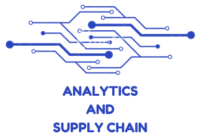Contents
TL;DR
- This post delves into different logistic models (1PL to 4PL), detailing their pros, cons, and real-world applications.
- Using a clothing company as an illustrative example, we provide a comprehensive guide on how these models can shape your business.
- The blog underscores the significant role of data analytics in determining the best model for your business and optimising operations.
- Regardless of the size of your enterprise, understanding these logistics models and leveraging data analytics can significantly boost efficiency and growth.
Understanding Logistic Models
Logistics must be strategically and efficiently managed as the backbone of a successful company. As a business professional, you’re likely aware that different logistic models are available to streamline your supply chain. These models, varying from 1PL to 4PL, define the roles and responsibilities within the supply chain and provide the infrastructure for your business to operate smoothly.
General Benefits and Trade-offs
Choosing the most suitable logistics model is akin to selecting the correct gear for your business vehicle. Depending on which “gear” you pick, you may enjoy significant cost savings, increased scalability, and an opportunity to focus more on your core business. However, these benefits come with trade-offs, primarily in the form of reduced control over your operations. Understanding these dynamics and thoroughly looking at your business’s current situation and context is critical in making the right decision for your business.
Amazon does a very simple overview here.
Understanding 1PL (First-Party Logistics)
The 1PL model signifies that a company manages its logistics operations in-house. They operate their own trucks, employ their own drivers, and manage their own warehouses.
Pros:
- Control: Complete control over the entire logistics operation and often includes transportation, storage, handling, and distribution.
- Confidentiality: All information regarding operations and supply chain stays within the company, minimising the risk of information leaks.
- Customisation: Flexibility to customise and modify operations to best suit the specific needs and strategies of the company.
Cons:
- Cost: Significant financial investment is needed to maintain vehicles, warehouses, and staff, as well as to keep up with technological advancements in logistics.
- Limited Scalability: Expansion or contraction in response to demand fluctuations can be challenging and time-consuming.
- Limited Expertise: The company has to manage all operations, which may divert attention and resources from its core business.
Imagine a clothing company that manages every step of its supply chain, from raw materials to the delivery of the final product. The company owns its own factories, warehouses, and delivery trucks, providing them complete control but also leaving them responsible for all costs and challenges.
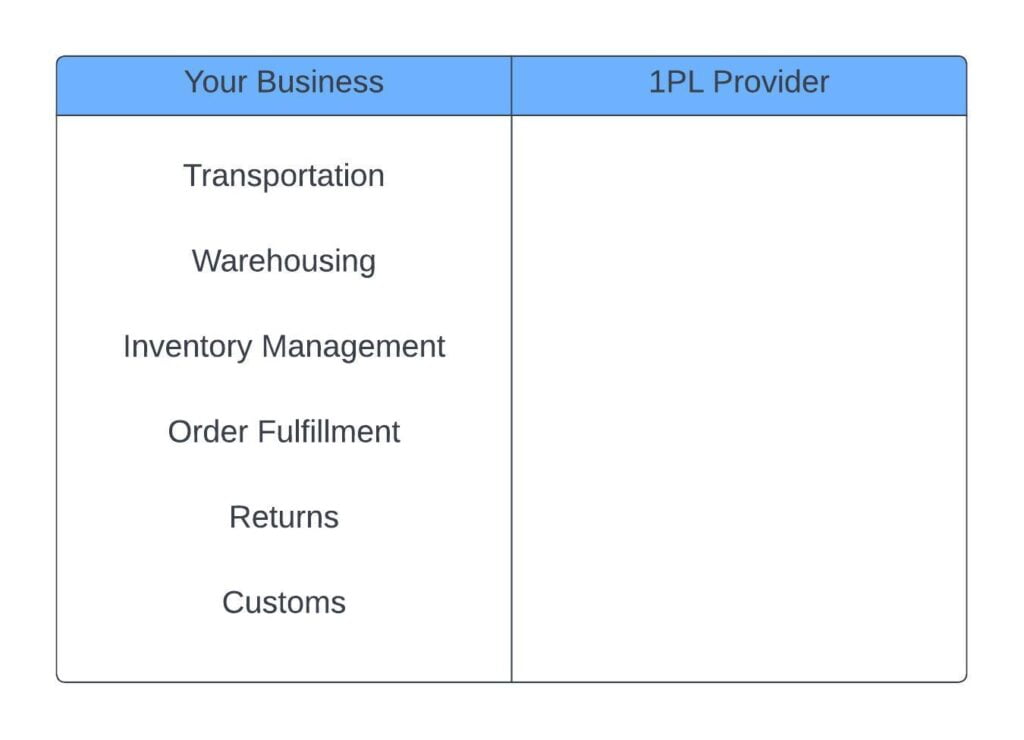
Exploring 2PL (Second-Party Logistics)
A 2PL model involves outsourcing some aspects of logistics, typically transportation or warehousing, to another party.
Pros:
- Reduced Costs: Cost savings due to outsourcing specific operations, like transportation or warehousing.
- Assets: 2PL providers often own their assets (trucks, ships, etc.), which can mean more reliable service.
- Simplicity: Less complexity compared to managing multiple outsourced partners, as in the 3PL or 4PL models.
Cons:
- Less Control: Less control over operations compared to a 1PL model.
- Limited Flexibility: The list of capabilities offered by 2PL providers may not be as flexible or comprehensive as those provided by 3PL or 4PL providers.
- Dependency: The company becomes dependent on the 2PL provider, which can be risky if the provider fails to deliver as expected.
Continuing with our clothing company example, the company might outsource its delivery operations to a 2PL shipping company, often allowing them to focus more on production and less on logistics. However, they are now dependent on the 2PL provider for timely deliveries.
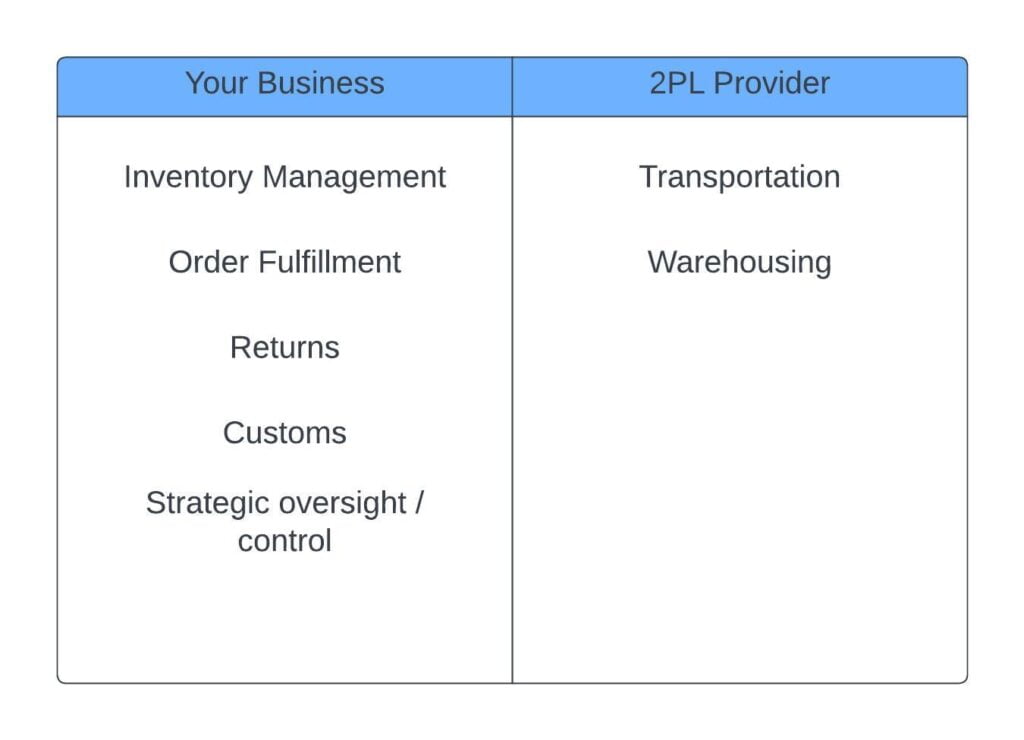
Unraveling 3PL (Third-Party Logistics)
The 3PL model involves outsourcing even more of the logistics operations. A 3PL provider might handle transportation, warehousing, and other tasks.
Pros:
- Cost Savings: Potentially significant cost savings due to 3PL’s efficiency, scale, and expertise.
- Scalability: 3PLs can more easily scale operations up or down in response to demand fluctuations.
- Focus on Core Business: The company can focus more on its core business, leaving logistics to the 3PL provider.
Cons:
- Reduced Control: Less control over logistics operations than in the 1PL and 2PL models.
- Risk: If the 3PL provider fails to deliver as expected, it can significantly impact the company’s operations.
- Complexity: Managing relationships with 3PL providers and integrating their systems and processes can be complex.
For our clothing company, adopting a 3PL model could mean outsourcing warehousing and transportation to a logistics company. This allows them to focus even more on their core business while the 3PL provider handles the logistics.
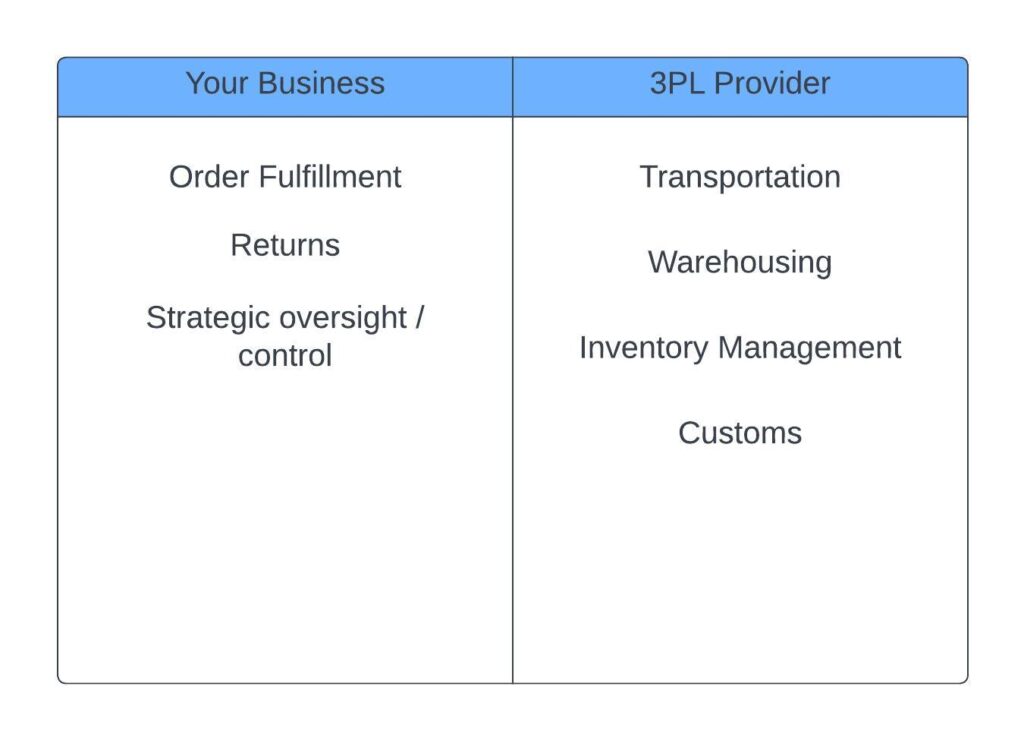
Deciphering 4PL (Fourth-Party Logistics)
A 4PL logistic model is the most comprehensive outsourcing model, with a 4PL provider managing the entire supply chain.
Pros:
- Strategic Oversight: A 4PL provider can offer strategic oversight and coordination of the end-to-end supply chain.
- Cost Savings: Potentially significant cost savings and efficiency gains due to 4PL’s expertise and scale.
- Focus on Core Business: The company can focus entirely on its core business, leaving all logistics operations to the 4PL provider.
Cons:
- Reduced Control: Even less control over logistics operations compared to the 3PL model.
- Dependency: The company becomes highly dependent on the 4PL provider, which can be risky.
- Complexity: Transitioning to a 4PL model can be complex and require significant changes to the company’s operations and systems.
For our clothing company, transitioning to a 4PL model would mean entrusting its entire supply chain operations to a 4PL provider. The provider might coordinate with several 3PLs, handle contracts, optimise the supply chain, and even provide data analysis and strategic planning.
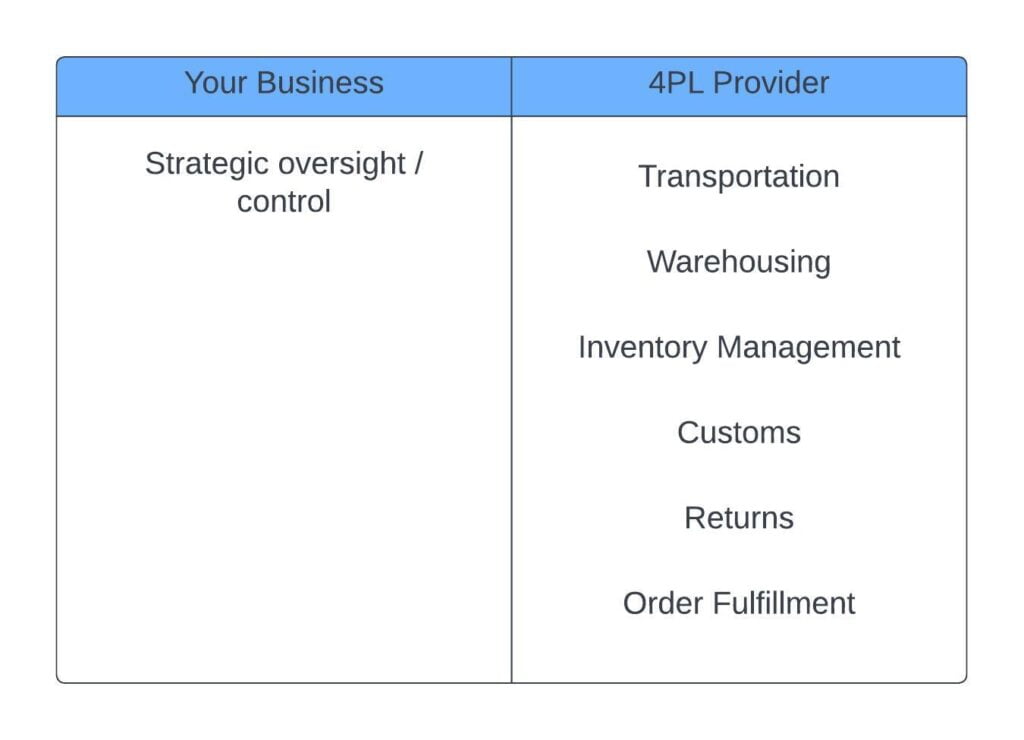
Benefits of Data Analytics in Logistic Models
Data analytics can significantly enhance decision-making processes and the management of various logistic models. It offers a potent blend of insights that can aid in achieving optimal efficiency, cost-effectiveness, and scalability.
Data analytics can be used in the following ways:
- Analysing Current Operations: A company can identify bottlenecks, inefficiencies, and areas for improvement by collecting and analysing data on their current logistics operations and this might include data on transportation times, warehouse efficiency, order accuracy, etc.
- Cost Analysis: Data analytics can help a company understand the cost of their current logistics operations and how these might change under different models. For instance, a company might use data to compare the cost of running its own fleet of trucks (1PL) versus contracting with a shipping company (2PL), using a 3PL provider, or hiring a 4PL provider to manage its entire supply chain.
- Demand Forecasting: A company can predict future product demand by analysing historical sales data. This can help them determine the logistics capacity and whether they need the scalability a 3PL or 4PL provider might offer.
- Service Level Analysis: Data on delivery times, order accuracy, and other service level indicators can help companies determine whether their current logistics operations meet their needs and how these might improve under different models.
- Risk Assessment: By analysing data on factors like carrier reliability, weather disruptions, and other potential risks, a company can evaluate the risk associated with their current logistics operations and how these might change under different models.
- Scenario Analysis: Using data analytics, a company can model different scenarios to see how their logistics operations would perform under other circumstances. This could include changes in demand, disruptions to their supply chain, changes in costs, and more.
Examples How a Company Decides Which of the Logistic Models to Use
- A manufacturing company might leverage data analytics to anticipate future product demand based on historical sales data. This could guide them towards a 3PL or 4PL model, which offers greater scalability.
- An e-commerce firm might use data to conduct a cost-benefit analysis, comparing the expenses of maintaining their own delivery fleet (1PL model) versus the potential savings from outsourcing these tasks in one of the 2PL, 3PL, or 4PL logistic models
- A retail chain might use data analytics to identify inefficiencies or bottlenecks in its current logistics operations. This could provide a clearer picture of the areas that need improvement, informing their decision on which logistic model to adopt.
Examples of How Data Analytics Can Help Logistic Operations
- A pharmaceutical firm could use data analytics to monitor the performance of its 3PL provider. By evaluating key performance metrics, they can uncover inefficiencies or areas that need improvement, ensuring optimal performance.
- A tech enterprise utilising a 4PL model might leverage data analytics to manage and optimise contracts with its provider. This would ensure they obtain the best value for their investment and maintain operational efficiency.
- A food distribution company may use data analytics to assess the reliability and timeliness of its 2PL transportation provider. This would help them maintain a high level of service quality, which is essential for customer satisfaction.
